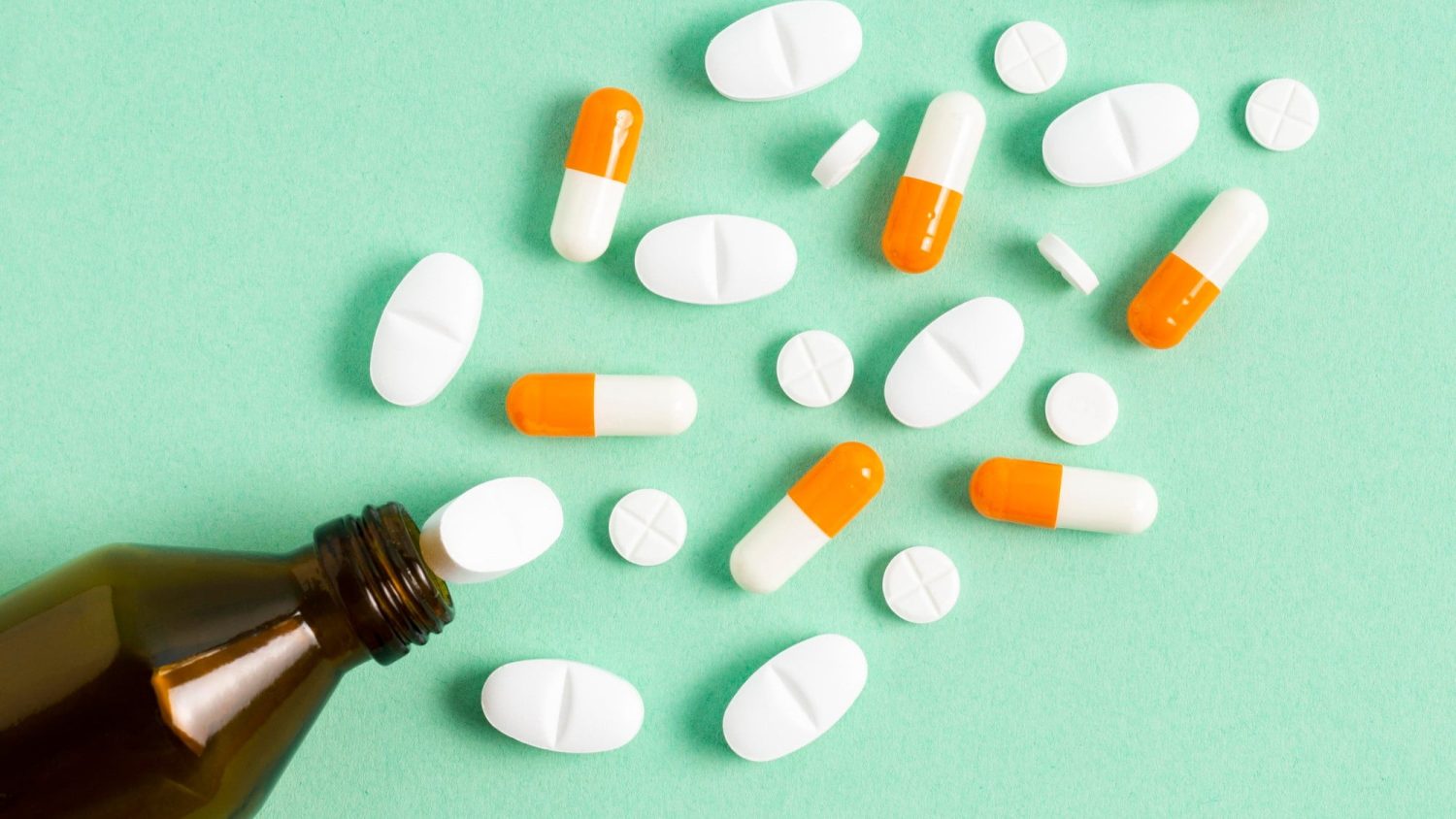
Have you ever wondered why some tablets are smooth, colorful, and not that bitter? The secret is its outer layer. It’s called pharmaceutical coating.
This coating does more than give a better look and taste. It can protect sensitive ingredients, reduce irritation, and even control where the drug is released in the body.
Do you think only tablets are coated? Capsules, pellets, granules, and even tiny drug beads can be coated too.
Want to learn more about pill coating? Let’s dive into the most common coating types in the pharmaceutical industry and what they do.
What Is Coating in Pharma?
Pharmaceutical coating is the process of spraying a thin layer of material onto a solid dosage form. Without coating, many drugs would taste awful, break down too fast, or irritate your stomach. Coatings turn ordinary pills into consumer-friendly, stable products.
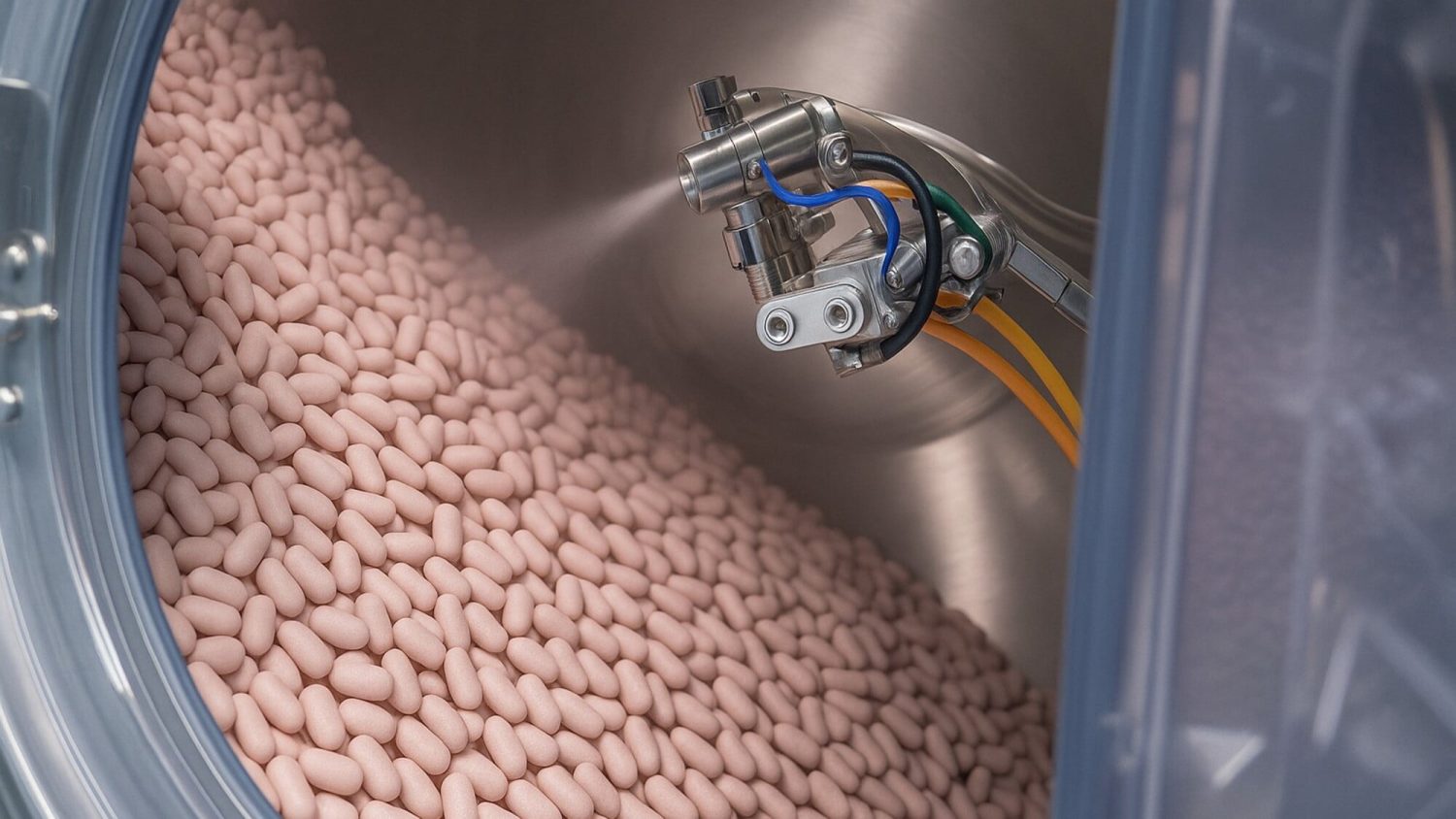
The practice of coating pharmaceuticals has been around for a very long time. Today, various coating materials are available. These materials can improve how medications work. And this is also why there are so many coating types today.
What Is the Purpose of Pharmaceutical Coating?
We’ve touched a little on how coatings affect the look, taste, and function of pills. Now, let’s dig into why manufacturers choose to coat tablets and capsules.

- Taste Masking: Many active drug ingredients are bitter or unpleasant. A coating seals in that flavor. It can make the pill taste neutral or slightly sweet.
- Better Swallowing: Because tablets are made from powders, their surface can dissolve or swell when exposed to saliva. Uncoated tablets often feel rough and can be uncomfortable to swallow. A smooth, rounded coating helps them go down more easily.
- Protection: Some medications are sensitive. They are easily damaged by moisture, air, or light. A pharmaceutical coating can protect them and ensure their potency throughout the shelf life.
- Release Control: Certain drugs should not break down immediately in the stomach. Coating can delay release until the drug reaches the intestine. This is important for acid-sensitive drugs.
- Aesthetics and Branding: Coatings let pharma manufacturers color and label their products. A colorful, glossy coating can make tablets easier to identify.
What Are the Different Types of Pharmaceutical Coating?
Pharmaceuticals typically use two main coating types. Each has its own features, uses, and advantages.
1. Sugar Coating
This is the traditional method that can be traced back to the 19th century. At that time, the coating was more about masking the unpleasant flavors of drugs rather than protecting.
A sugar coating consists of multiple layers of sugar syrup. It creates a hard, shiny, colorful, candy-like shell around the pill. This coating method is generally used for tablets, not capsules.

Manufacturers love sugar coating because it makes drugs look attractive, masks bad taste, and protects them from moisture. The downsides? Tablets would be larger due to the several layers of sugar. The coating process takes more time and requires skilled operators.
2. Film Coating
Film coating is the most popular modern and versatile method for coating pharmaceuticals. It can be used for tablets, capsules, and other solid dosage forms. Instead of sugar, it’s a thin polymer film on the pill. This thin film also contains plasticizers and colorants.
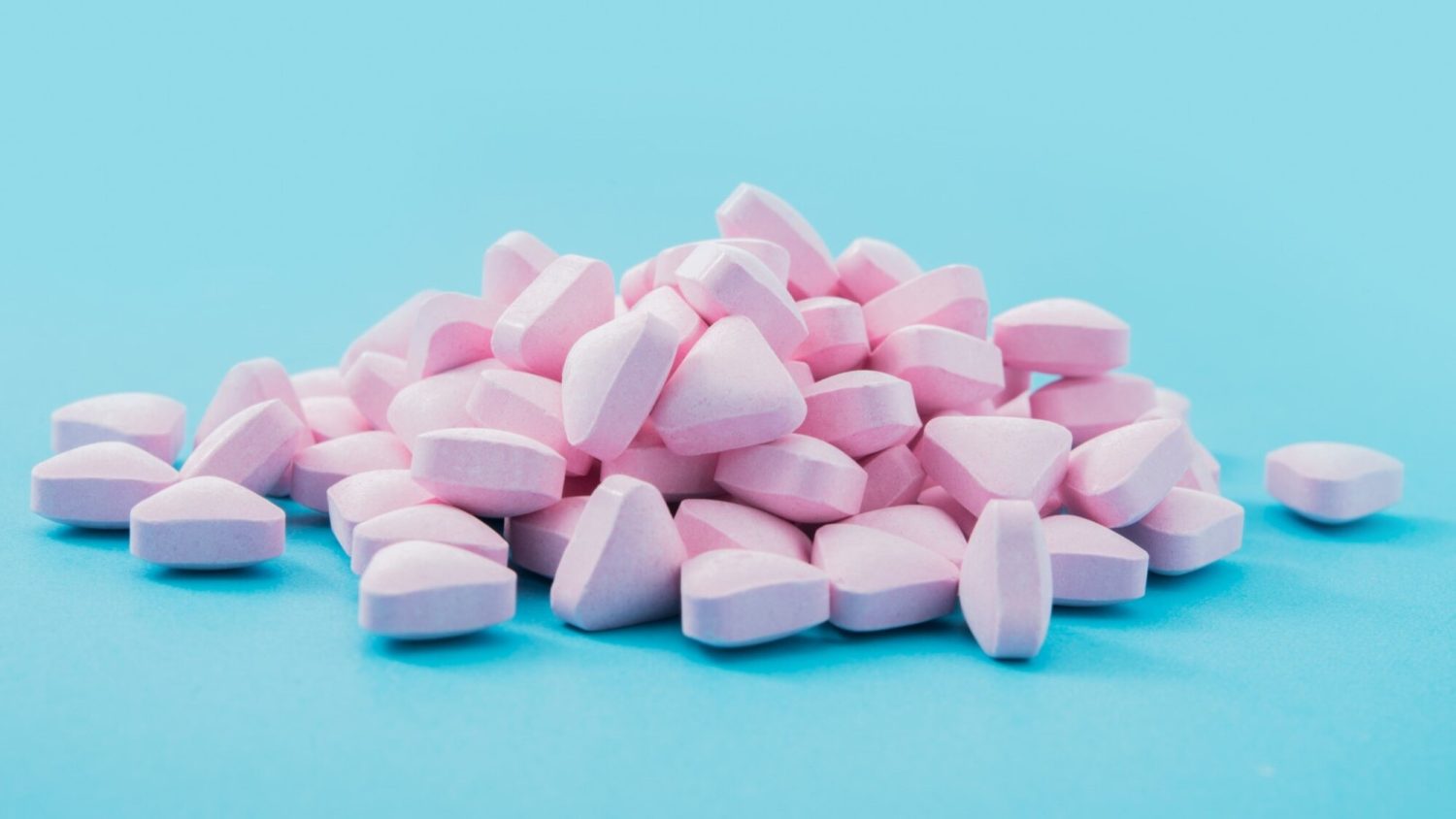
Film-coated pills are now widespread because they’re faster to apply than sugar. The finish created is thinner but more protective.
Film coating can also be classified into several subtypes depending on its purpose and solvent system.
By Function
Non-functional Coating
These pharmaceutical coatings focus on looks and protection. They make the film-coated pill smoother, more appealing, odor-free, or moisture-resistant. But they don’t change the drug’s performance.
Functional Coating
This coating type is designed to modify how or where the drug is released.
There are two main kinds in this group.
Enteric Coating
This is one of the most common film coatings used in pharmaceuticals. It prevents the tablet or capsule from dissolving in stomach acid. It releases only in the small intestine. Enteric coatings are ideal for protecting acid-sensitive drugs. They also help reduce stomach irritation caused by harsh ingredients.
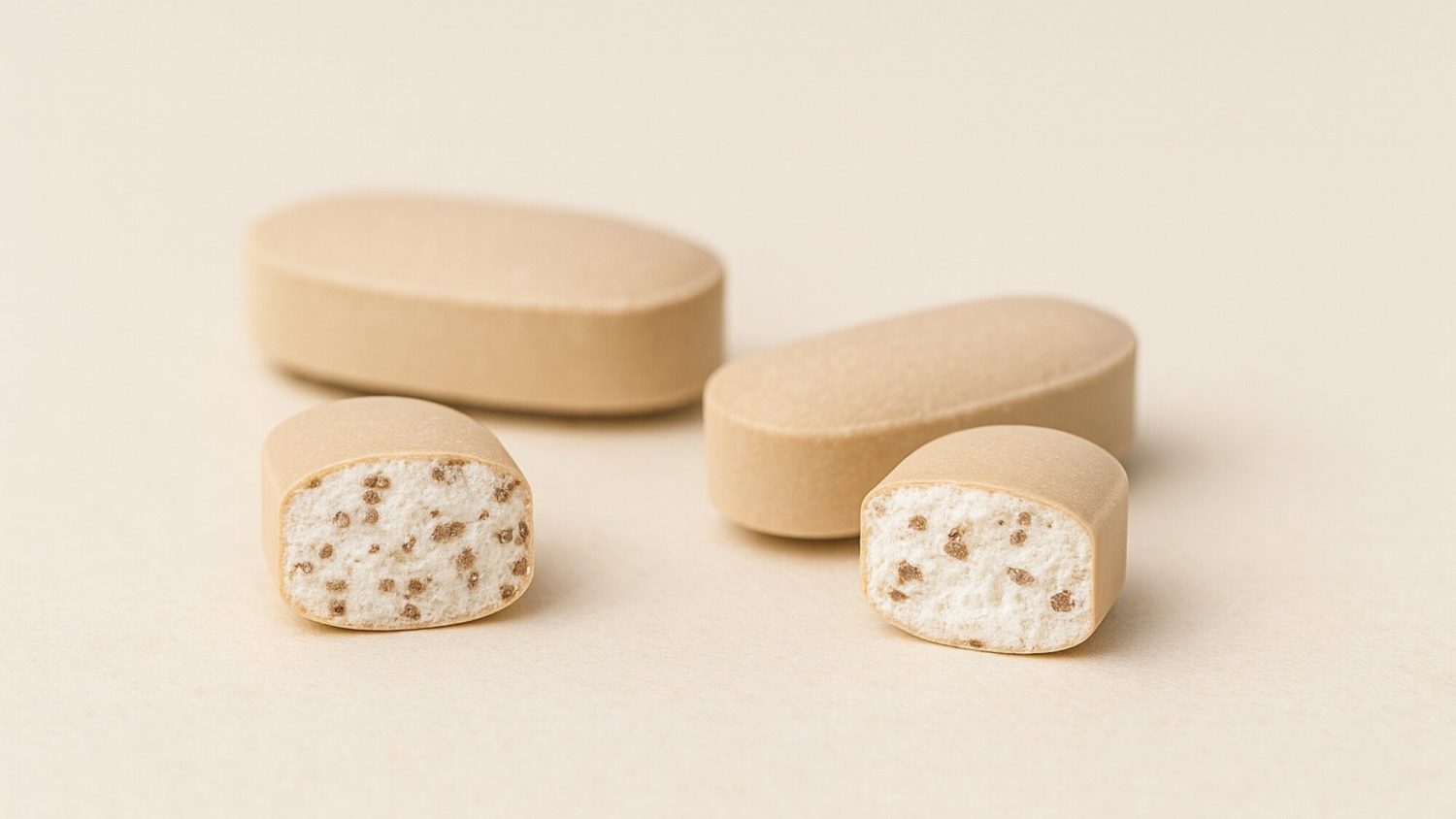
Controlled-release Coating
These film coatings work on how quickly the drug is released over time. Depending on the formulation, it can provide:
- Sustained release: slow, steady delivery
- Extended release: longer duration of action
- Delayed release: at a specific point in the digestive tract
They help patients stick to their treatment plans and keep drug levels steady in the bloodstream.
By Solvent
Aqueous Coating
Because it uses water as the main solvent, this coating is considered safe and environmentally friendly. That’s why it’s the most widely used pharmaceutical coating today. But since it relies on water, aqueous film coating takes longer to dry than other coating methods.
Organic Solvent-based Coating
The biggest plus of this coating type is its quick drying time. It uses volatile organic liquids like alcohols and esters. The coating works well for water-insoluble polymers and moisture-sensitive drugs. But it’s now discouraged because the solvents are toxic and flammable. They can cause environmental and safety issues.
Solvent-free Coating
Solvent-free coating is a newer, greener alternative to traditional solvent-based methods. It applies the polymer using molten polymer or dry powder instead of liquid carriers. Because there’s no solvent to dry off, the coatings are great for heat-sensitive drugs. This approach is cleaner and energy-efficient but needs precise control to work well.
What Materials Are Used in Pharmaceutical Coating?
Because pharmaceutical coatings are ingested with the active drug, they must be made from safe, edible materials.
Depending on the coating type, you’ll find:
| Material | What It Does |
| Sugars | In sugar coating, ingredients like sucrose, glucose syrup, or maltitol are used to give tablets their classic shine and sweet taste.These materials are applied layer by layer to build the coating.They smooth edges, hide bitterness, and form a solid outer shell against moisture. |
| Polymers | Polymers decide how and when tablets or capsules break down.They’re one of the essential components of pharmaceutical film coatings.The common polymers are:Water-soluble polymers: HPMC or PVA, for standard film coatings that dissolve quicklyWater-insoluble polymers: ethyl cellulose, for controlled-release coatingsAcid-resistant polymers: CAP, Eudragit, or HPMCP, for enteric coatings that dissolve only in the small intestine |
| Plasticizers | This material makes the polymer film flexible and strong.It’s often added to prevent cracking or peeling of the coating.PEG, triethyl citrate, and castor oil are all popular choices.They’re especially important for functional film coatings like enteric and controlled-release coatings. |
| Colorants and Opacifiers | Pigments give tablets a recognizable look.Opacifiers protect light-sensitive drugs.Unique colors are very helpful for branding. The iconic “Pfizer blue” is a perfect example. |
| Solvents | Solvents turn coating materials into a sprayable coating solution.Water-based solvents: safe, eco-friendly, but dry slowlyOrganic solvent-based options: dry fast, but can be toxic |
| Waxes and Polishing Agents | Tablets often look shiny because their coatings contain carnauba wax, beeswax, or shellac.These materials also form a protective layer over the active drugs. |
Equipment Used for Coating in Pharma
To apply these coatings efficiently, you need specialized machines. Here are the three most common systems:
1. Standard Coating Pan
This is the classic machine used for sugar coating and some film coating processes. It comes in a round, angled pan. Tablets tumble inside and get sprayed with coating solution as the pan rotates. Warm air is directed over the rotating tablets for drying.

Since it’s a conventional setup, this coating machine needs more hands-on control and may take more time to coat.
2. Perforated Coating Pan
Perforated pan coaters are widely used for film coating. They also rotate a pan to coat tablets or capsules. But unlike standard pans, the system is fully enclosed.
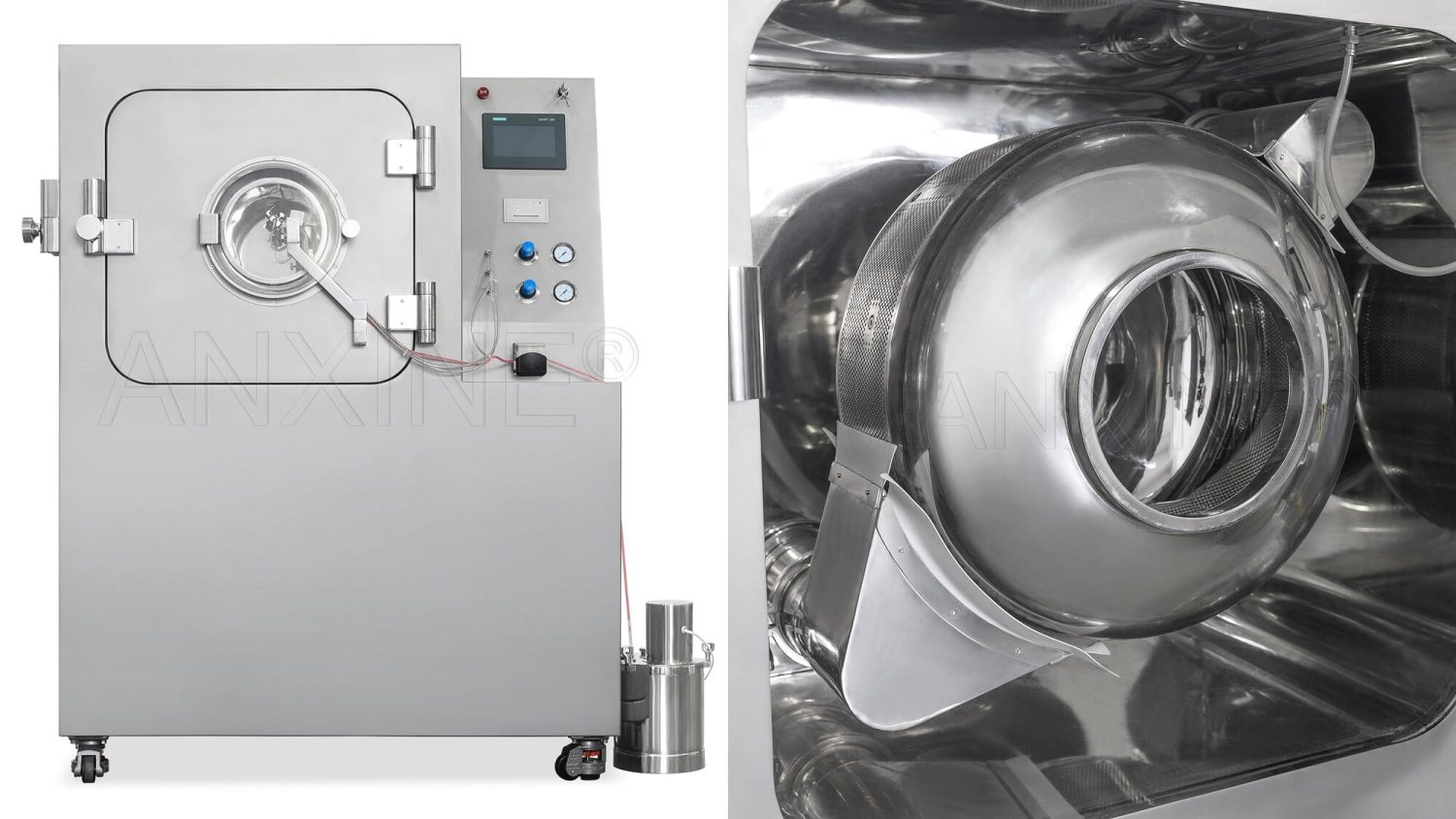
The pan looks like a drum with countless small holes. Hot air passes through these holes to dry tablets faster. The tablets also get coated evenly.
3. Fluidized Bed Coater
These machines coat tablets or capsules by “floating” them. They use airflow to lift the pills, and spray the coating solution from the bottom or the top. The suspended tablets get dried quickly at the same time.
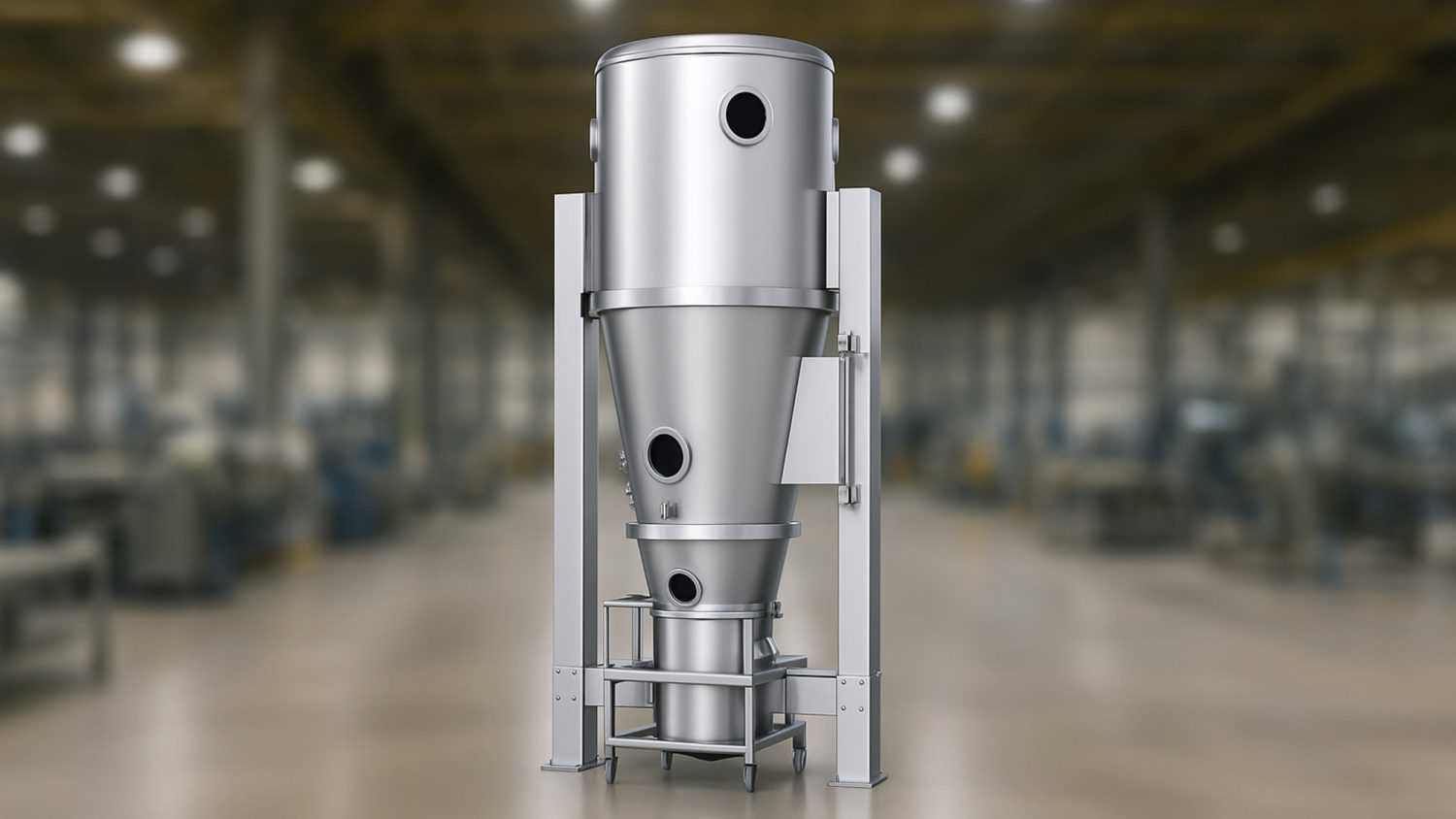
Fluidized bed coaters work well for tablets, capsules, and even small particles. They’re often used for coating controlled-release tablets.
These coating machines are more complex than pan-based systems, so they are usually found in larger pharmaceutical operations.
Key Takeaways
- Pharmaceutical coatings enhance a drug’s look, taste, stability, and performance. They also boost patient adherence.
- Sugar, film, and enteric coatings all serve different purposes.
- Polymers and plasticizers play a big role in how these coatings work.
- A variety of equipment is used in the pharmaceutical industry to apply these coatings.